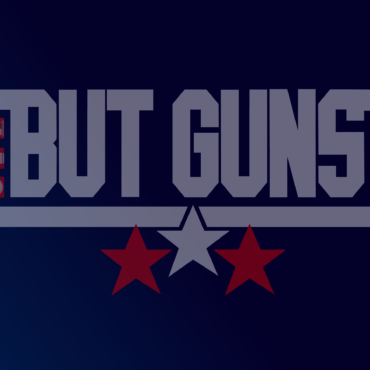The DPRK Type 73 Machine Gun

The North Korean Type 73 has drawn attention for its role in the Russian so-called Special Military Operation (SVO), which refers to the Russo-Ukrainian War. This conflict is complex and has evolved significantly over time. The deployment of ground forces from the Democratic People’s Republic of Korea (DPRK) into the SVO has raised several questions, especially since this involvement was first noted in November 2024.

To clarify, the Special Military Operation (SVO) area includes all of Ukraine and, based on recent developments, extends up to 807 miles (1,300 kilometers) into the Russian Federation, reaching targets such as those in Izhevsk. It is important to note that the mere presence of a weapon within the SVO area does not necessarily indicate its use in Ukraine. For example, photos of the Type 73 machine gun have emerged from western Russia and possibly in Ukraine, which lies within the SVO area of operations. However, to confirm that the Type 73 has been used in Ukraine, it would need to be captured by Ukrainian troops. Currently, none have been captured by Ukrainian troops. The situation remains fluid, and without concrete evidence or reliable sources, we cannot confirm any use of the weapon in Ukraine at the moment.
The weapon has appeared with mobilized Russian soldiers. It is unclear whether they are using it for training or conducting combat operations, but what can be said is that it is not being used at any scale. The Type 73s supplied appear to have been from storage, as none showed any patina from use.
The Gun
Although I don’t have hands-on experience with the Type 73, I will do my best to describe it. North Korea classifies the Type 73 as a light machine gun; this was developed in the 1970s when dual feed systems were a popular concept. Its design incorporates elements from several firearms, blending influences primarily from Soviet and Czechoslovakian origins. North Korean firearms show significant Czechoslovakian influence combined with features from the Soviet PK machine gun.

North Korean designers were familiar with various Czechoslovakian models, such as the ZB26 light machine gun, the Czech 52 machine gun, and the RPD. While developing their firearms based on Soviet designs, they did so without formal licensing or access to technical data packages. Instead, they utilized their knowledge of the PK design and incorporated a top magazine feed into their design.

The Czech VZ52 machine gun is notable for its dual-feed system, which allows for belt feeding and a top-mounted magazine. Its design has significantly influenced the Type 73. The magazine well includes a cover that houses a cartridge guide, which, when closed, guides the cartridge during belt feeding.

The Type 73 barrel has a heavier profile than the parent design, the PK. There is evidence that it is interchangeable with PKM barrels. It also features fluting to increase the surface area to manage better cooling. There is no provision for mounting on a tripod or other gun mounts. It is unknown if the gun is issued with a second barrel.
One of the Type 73’s key features is its dual feed system, allowing the magazine to reverse cycle rounds. This design is essential for compatibility with the claw delink used in the PK machine gun. The Type 73 is also equipped with a Degtyarev safety mechanism like that found on the RPD.
Other notable feature of this weapon is its ability to launch grenades. To support this capability, the gas system is designed with a close-setting feature that includes settings ranging from 0 to 5. The grenade spigot is machined into the end of the barrel, and a two-port cover is conveniently stored underneath it. Additionally, a separate grenade leaf sight is installed on the gas block.

The Type 73 gun is designed to use a 30-round magazine, which enhances maneuverability since it does not have an ammo can bracket. This magazine functions as a starter magazine, similar to the starter belts used by many countries. It can be easily removed to load a belt from a 200 round ammo can when setting up the gun. This magazine reduces the gun’s overall weight compared to a gun-mounted 100-round ammunition can, significantly making it easier to handle since the weapon weighs 23 lbs. (10.6 kg) when empty.
The Type 73 lacks a provision for tripod mounting, limiting the gun to a light machine gun or squad automatic weapon role and overall limiting the gun capability. This fits with the DPRK infantry fighting doctrine centered on an aggressive offensive strategy. This approach relies on combined arms tactics that utilize overwhelming firepower and maneuverability to achieve success on the battlefield against adversaries. In short, the Type 73 is the North Korean version of today’s FN MINIMI.
The Type 73 has been observed in various conflict zones, including the Iran-Iraq War, Syria, Lebanon, and Yemen. This weapon is still in use, having been seen with different forces across Africa and the Middle East and recently in Russia by DPRK troops.
However, the Type 73 machine gun has been deemed inadequate for the Democratic People’s Republic of Korea (DPRK). To resolve this issue, a replacement was pursued, leading to the introduction of the Type 82 machine gun in 1982. The Type 82 is a copy of the PKM and does not incorporate the dual feed capability that characterized the Type 73. Consequently, the Type 82 began to replace the Type 73 in front-line service, while the Type 73 was relegated to reserve units.
Type 73 machine gun specifications:
- Caliber: 7.62×54
- Length: 47 inches (1190mm)
- Barrel length: 24 inches (608mm)
- Weight: 23 lbs. (10.6 kg)
- Rate of fire: 600-700 rounds per minute
- Feeding: belt or 30 round magazine.
- Effective range: 1000 meters
- Max range: 3800 meters


